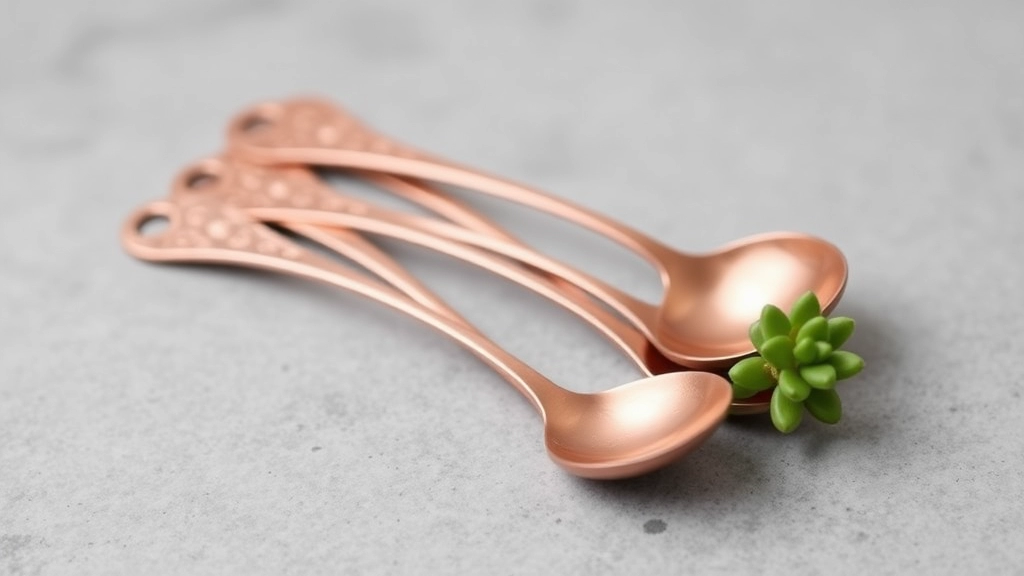Kalanchoe Copper Spoons: A Unique Addition to Your Succulent Collection
If you’re looking to add some unique charm to your succulent collection, Kalanchoe Copper Spoons is a fantastic choice. This striking plant, with its copper-coloured, spoon-shaped leaves, is not only visually appealing but also relatively easy to care for. Let’s dive into the essentials of growing and maintaining this beautiful succulent.
Growing Conditions
First off, Kalanchoe Copper Spoons thrives in bright, indirect sunlight. Too much direct sun can scorch its leaves, while too little light can lead to leggy growth.
Watering Tips
As for watering, the key is to avoid overwatering. Allow the soil to dry out completely between waterings to prevent root rot. A well-draining soil mix is crucial for healthy growth, and remember to adjust watering habits based on the season. With these basics in mind, you’re well on your way to enjoying a thriving Kalanchoe Copper Spoons in your home or garden.
Optimal Light Conditions for Kalanchoe Copper Spoons
Are you struggling to keep your Kalanchoe Copper Spoons thriving? One of the most critical factors in their care is light exposure.
Kalanchoe Copper Spoons, known for their unique, spoon-shaped leaves, flourish under specific lighting conditions.
Watering Guidelines: How to Prevent Overwatering
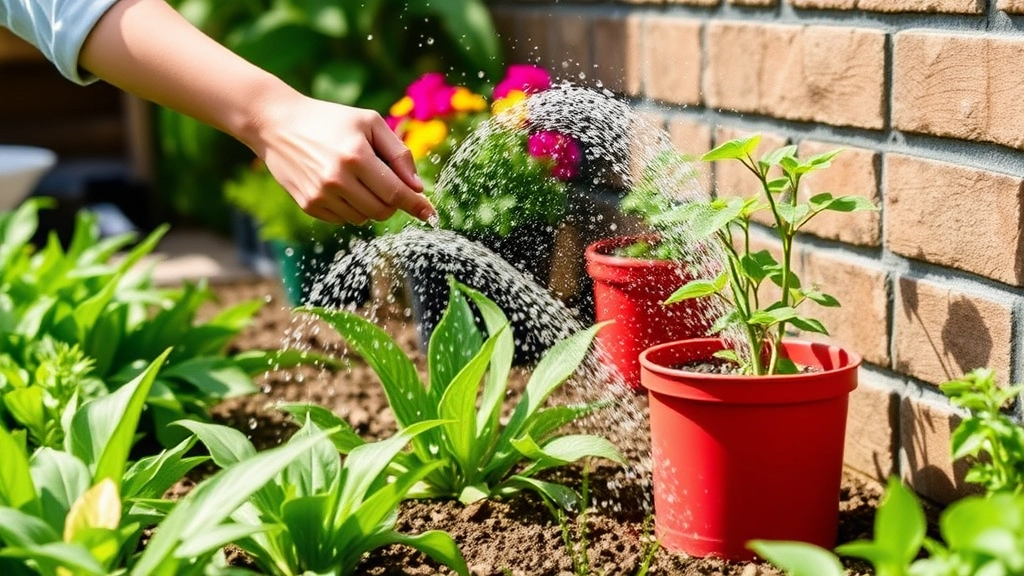
So, you’ve got your Kalanchoe Copper Spoons, and you’re wondering how to keep them thriving without drowning them, right?
Overwatering is a common pitfall for many plant parents, and it can lead to root rot faster than you can say “succulent.” Here’s how to keep your watering game strong and your Copper Spoons happy.
Key Watering Tips
- Check the Soil: Always stick your finger about an inch into the soil. If it feels dry, it’s time to water. If it’s still moist, hold off for a few more days.
- Water Deeply: When you do water, give it a good soak. Allow the water to run through the drainage holes. This ensures the roots get the moisture they need.
- Frequency Matters: In the warmer months, you might find yourself watering every couple of weeks. In winter, cut back to once a month or even less.
- Use Well-Draining Pots: Make sure your pots have drainage holes. This helps excess water escape and keeps your roots from sitting in soggy soil.
- Watch for Signs: Yellowing leaves or mushy stems? That’s a red flag that you might be overdoing it. Adjust your watering schedule accordingly.
Best Soil Mix for Healthy Growth
When it comes to nurturing your Kalanchoe Copper Spoons, the right soil mix is crucial for optimal health and growth. Many plant enthusiasts often worry about choosing the perfect soil, and rightly so, as it can significantly impact your plant’s vitality.
Ideal Soil Composition
For Kalanchoe Copper Spoons, you’ll want a well-draining soil that retains some moisture but doesn’t become waterlogged. Here are the key components to consider:
- Cactus Mix: A pre-packaged cactus or succulent mix is an excellent choice, as it is designed for drainage.
- Perlite: Adding perlite improves aeration and drainage. Aim for about 20-30% of the total mix.
- Coarse Sand: Incorporating coarse sand can also enhance drainage. A similar ratio of 20-30% works well.
- Organic Matter: A small amount of organic matter, like compost, can provide essential nutrients without overwhelming the plant.
DIY Soil Mix Recipe
If you’re feeling adventurous, you can create your own soil mix. Here’s a simple recipe:
- 1 part cactus mix
- 1 part perlite
- 1 part coarse sand
- Optional: A sprinkle of organic matter for added nutrients.
pH Considerations
Kalanchoe Copper Spoons thrive in slightly acidic to neutral pH levels (around 6.0 to 7.0). Testing your soil’s pH can help you ensure it meets these requirements.
Potting Tips
- Choose the Right Pot: Ensure your pot has drainage holes to prevent water retention.
- Layering: Consider adding a layer of gravel at the bottom of the pot for extra drainage.
For more detailed advice on growing Kalanchoe, check out our Ultimate Guide to Growing and Caring for Succulent Plant Kalanchoe. Additionally, if you’re interested in specific care tips for other Kalanchoe varieties, you might find our Kalanchoe Paddle Plant Care Guide helpful.
Temperature and Humidity Tolerance
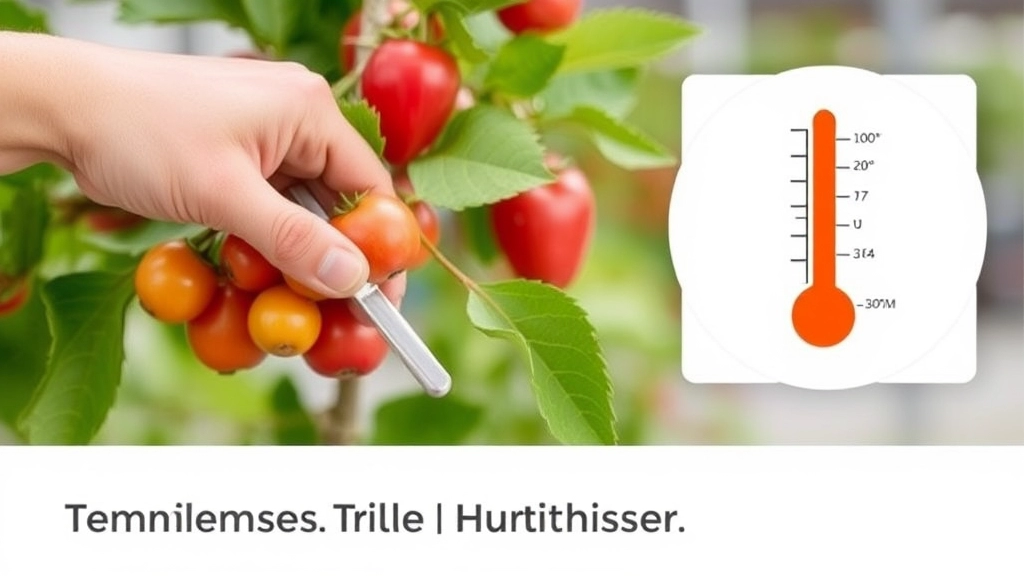
When caring for your Kalanchoe Copper Spoons, understanding its temperature and humidity preferences is vital for optimal growth. You might be wondering, “What temperature should I keep my plant at?” or “How does humidity affect my Kalanchoe?” Let’s dive into these essential factors.
Ideal Temperature Range
Kalanchoe Copper Spoons thrive best in moderate temperatures. Here’s what you should know:
- Optimal Temperature: Aim for a range of 20°C to 25°C (68°F to 77°F) during the day.
- Nighttime Temperature: At night, a drop to 15°C to 18°C (59°F to 65°F) is acceptable.
- Avoid Extremes: Keep your plant away from temperatures below 10°C (50°F), as this can cause stress.
Humidity Preferences
Humidity plays a crucial role in the health of your Kalanchoe. Here’s how to manage it:
- Low Humidity: Kalanchoe Copper Spoons prefer lower humidity levels, typically between 30% and 50%.
- Air Circulation: Ensure good air circulation around your plant to prevent excess moisture build-up.
Tips for Maintaining Ideal Conditions
- Location: Place your Kalanchoe in a well-ventilated area, away from drafts and extreme heat sources.
- Humidity Control: If your home is particularly humid, consider using a dehumidifier or placing the plant in a dryer room.
- Monitoring: Use a thermometer and hygrometer to keep track of the temperature and humidity levels.
Propagation Methods: Leaf and Stem Cuttings
Are you looking to expand your collection of Kalanchoe Copper Spoons? Propagation is a fantastic way to do just that. By using leaf and stem cuttings, you can easily create new plants without much hassle.
Leaf Cuttings
Steps to Propagate Using Leaf Cuttings:
- Select a Healthy Leaf: Choose a mature, healthy leaf from your Kalanchoe. Ensure it’s free from pests and diseases.
- Cut the Leaf: Using a clean, sharp knife or scissors, cut the leaf from the stem. Aim for a clean cut to avoid damaging the plant.
- Let it Callous: Place the leaf on a dry surface for a few days. This allows the cut end to callous over, reducing the risk of rot.
- Prepare the Soil: Use a well-draining soil mix, ideally a cactus or succulent blend.
- Plant the Leaf: Once the cut end has dried, lay the leaf flat on the soil surface. You can lightly press it into the soil for better contact.
- Water Sparingly: Mist the soil lightly, ensuring it remains moist but not soggy.
- Provide Light: Place the pot in bright, indirect light. Avoid direct sunlight, as this can scorch the leaf.
Stem Cuttings
Steps to Propagate Using Stem Cuttings:
Common Pests and Diseases and How to Prevent Them
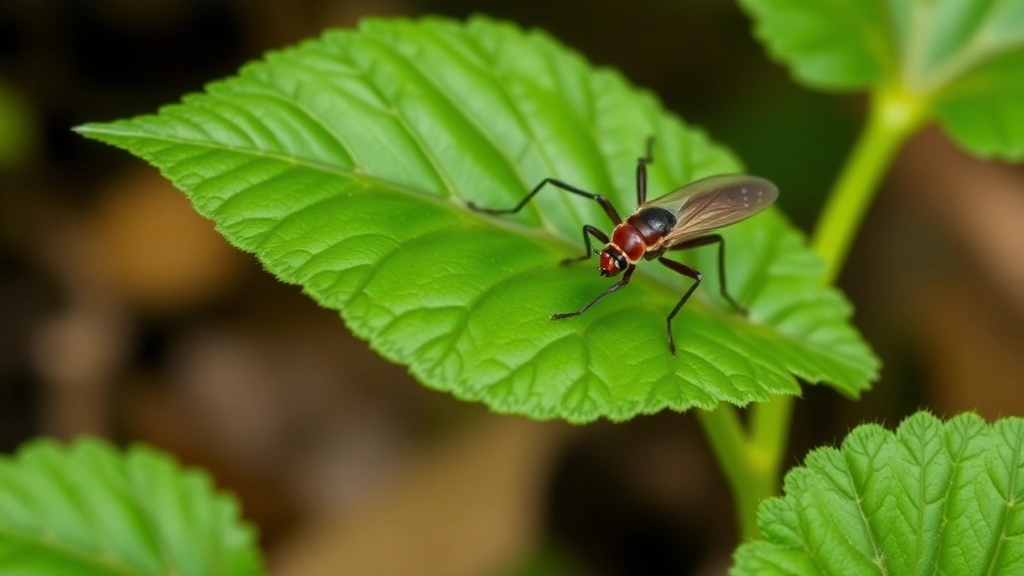
So, you’ve got your Kalanchoe Copper Spoons thriving, but what happens when uninvited guests show up?
Pests and diseases can be a real worry for plant parents.
Common Pests:
- Mealybugs: These little white fluff balls love to hide in the leaf axils.
- Aphids: Tiny green or black bugs that suck the life out of your plant.
- Spider Mites: They’re hard to spot but can cause yellowing leaves and webbing.
Common Diseases:
- Root Rot: Often due to overwatering, it can be a silent killer.
- Powdery Mildew: Looks like a dusting of flour on your leaves.
Prevention Tips:
- Inspect Regularly: Check your plants weekly. Look under leaves and in crevices.
- Keep It Clean: Wipe leaves with a damp cloth to remove dust and pests.
- Good Airflow: Make sure your plant isn’t cramped; it needs space to breathe.
- Proper Watering: Avoid overwatering to prevent root rot. Let the soil dry out between waterings.
If you spot any pests, act fast!
- Neem Oil: A natural pesticide that works wonders.
- Insecticidal Soap: Spray it directly on the pests.
- Isolate Affected Plants: Keep them away from your healthy plants to prevent spreading.
Fertilizing Practices for Vigorous Growth
As we delve deeper into nurturing your Kalanchoe Copper Spoons, let’s discuss the essential role of fertilisation in promoting vigorous growth. Many plant enthusiasts often wonder how to effectively nourish their plants without overwhelming them.
Understanding Fertiliser Needs
Kalanchoe Copper Spoons benefit from a balanced fertiliser, particularly during their active growing season. Here’s how to approach fertilisation:
- Frequency: Fertilise every 4-6 weeks during spring and summer.
- Type: Use a diluted liquid fertiliser, preferably one with a balanced N-P-K ratio (Nitrogen-Phosphorus-Potassium).
- Dilution: Always dilute the fertiliser to half the recommended strength to avoid burning the roots.
Signs of Nutrient Deficiency
Keep an eye out for signs that your Kalanchoe might need a boost:
- Yellowing Leaves: This may indicate a nitrogen deficiency.
- Stunted Growth: If your plant isn’t growing as expected, it might require more nutrients.
- Poor Flowering: A lack of blooms can signal insufficient phosphorus.
Special Considerations
- Winter Care: Reduce fertilisation during the dormant winter months to prevent stress.
- Organic Options: Consider using organic fertilisers like fish emulsion or seaweed extract for a more natural approach.
- Propagation: For those interested in expanding their collection, learn about how to propagate Kalanchoe in water.
- Climate Care: If you live in a warmer region, check out these Kalanchoe care tips for thriving in Texas climate.
Repotting Tips: When and How to Repot Kalanchoe Copper Spoons
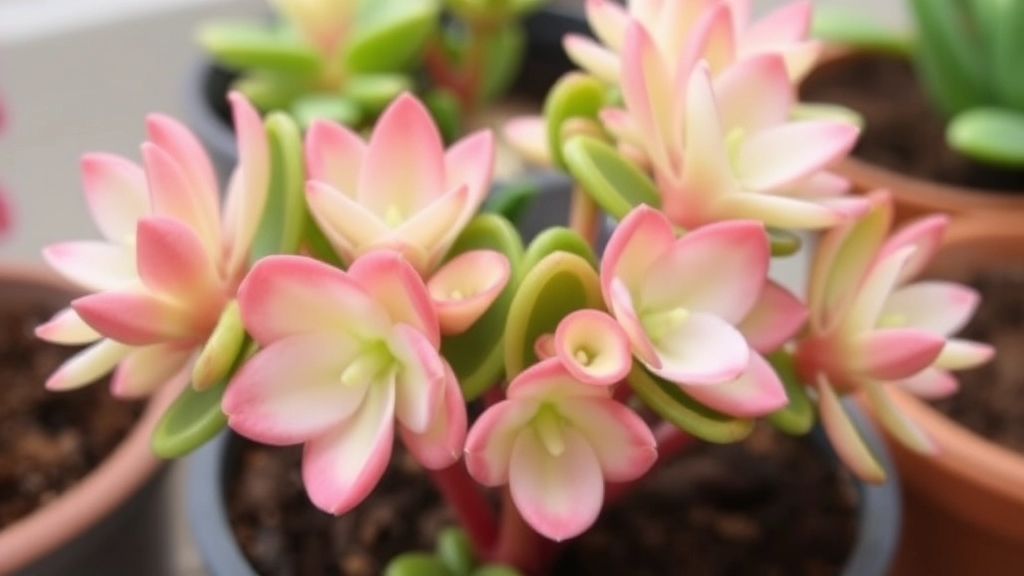
So, you’ve noticed your Kalanchoe Copper Spoons looking a bit cramped? You’re not alone! Many plant lovers face this dilemma. Knowing when and how to repot can make all the difference for your plant’s health.
When to Repot
- Root Bound: If you see roots poking out of the drainage holes, it’s time to act.
- Soil Degradation: If the soil looks compacted or has lost its nutrients, that’s a sign.
- Growth Stagnation: If your plant isn’t growing as it should, it might be begging for more space.
How to Repot
- Choose the Right Pot: Go for a pot that’s one size larger than the current one. Make sure it has drainage holes!
- Prepare Your Soil: Use a well-draining soil mix. A cactus mix works wonders!
- Remove the Plant: Gently squeeze the pot to loosen the soil. Carefully pull your plant out, holding it by the base.
- Inspect the Roots: Check for any dead or rotting roots. Trim those away to promote healthy growth.
- Place in New Pot: Add some fresh soil to the bottom of the new pot. Position your plant in the centre and fill in with more soil.
- Water Lightly: After repotting, give it a light watering. Too much water can stress the plant.
- Find the Right Spot: Place your newly potted Kalanchoe in a spot with optimal light conditions.
Understanding the flowering cycle of Kalanchoe Copper Spoons is essential for nurturing a thriving plant. For more detailed care tips, you might find the [ultimate guide to Kalanchoe Blossfeldiana hybrid care](https://planthq.org/ultimate-guide-to-kalanchoe-blossfeldiana-hybrid-care/) particularly useful.
To promote a healthy flowering cycle, consider these tips:
– Provide Bright Indirect Light: This helps stimulate flower production.
– Reduce Watering Before Blooming: Allow the soil to dry out slightly to encourage the plant to focus energy on flowering.
– Fertilize Wisely: Use a balanced fertilizer during the growing season to boost nutrient levels.
Once the blooming period is over, proper care is crucial. You can learn more about post-blooming care in our [care tips for thriving Kalanchoe red flower plants](https://planthq.org/care-tips-for-thriving-kalanchoe-red-flower-plants/).
FAQs about Kalanchoe Copper Spoons
How often should I water my Kalanchoe Copper Spoons?
Water your Kalanchoe Copper Spoons when the top inch of soil feels dry. In warmer months, this might be every couple of weeks, but in winter, you may only need to water once a month or less.
What is the ideal temperature range for Kalanchoe Copper Spoons?
Kalanchoe Copper Spoons thrive best in temperatures between 20°C to 25°C (68°F to 77°F) during the day and 15°C to 18°C (59°F to 65°F) at night. Avoid exposing them to temperatures below 10°C (50°F).
How can I prevent overwatering my Kalanchoe Copper Spoons?
Ensure the soil is dry an inch below the surface before watering. Use pots with drainage holes and avoid watering too frequently. Watch for signs of overwatering like yellowing leaves or mushy stems.
What humidity levels are best for Kalanchoe Copper Spoons?
Kalanchoe Copper Spoons prefer lower humidity levels, typically between 30% and 50%. Ensure good air circulation to prevent excess moisture build-up.
What are common pests that affect Kalanchoe Copper Spoons and how do I deal with them?
Common pests include mealybugs, aphids, and spider mites. Regularly inspect your plants, keep leaves clean, and ensure good airflow. Use neem oil or insecticidal soap if pests are detected.
What are the signs that my Kalanchoe Copper Spoons need repotting?
Signs include roots poking out of drainage holes, compacted or nutrient-depleted soil, and stagnated growth. These indicate it’s time to repot your plant.
How do I repot my Kalanchoe Copper Spoons?
Choose a pot one size larger with drainage holes. Use a well-draining soil mix, such as cactus mix. Gently remove the plant, inspect and trim the roots, place it in the new pot, add fresh soil, and water lightly. Finally, place it in an optimal light spot.
References
-
Kalanchoe Plant Care: How To Grow A Kalanchoe
-
Kalanchoe Copper Spoons Plant Profile
-
Kalanchoe: How to Care for Kalanchoe Plants
